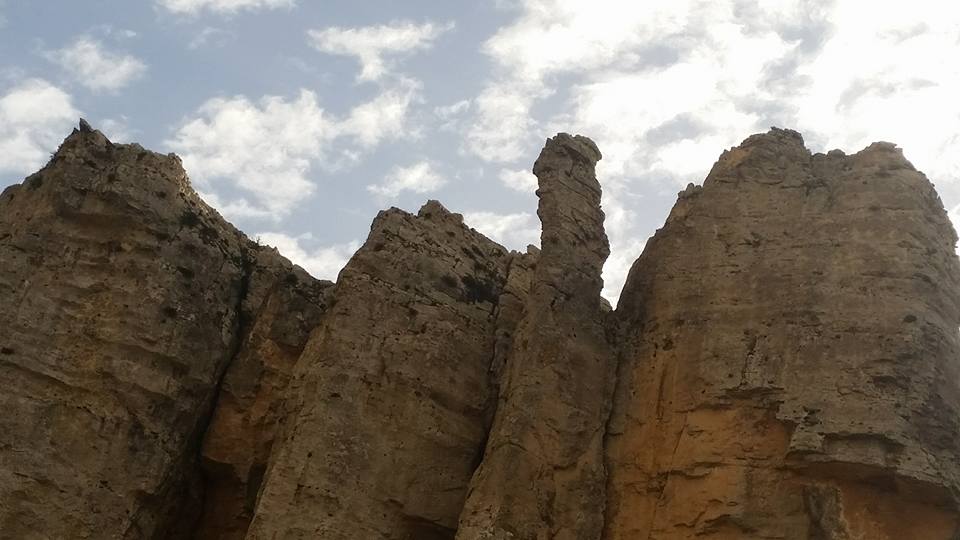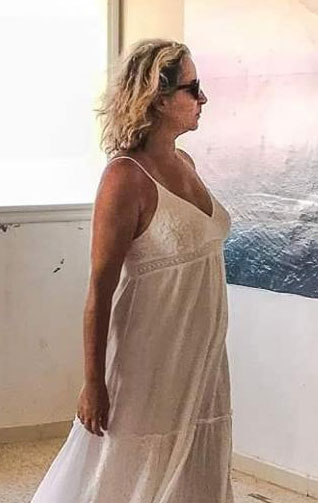
The Ministry of Cultural Affairs initiated the first steps for the project of inscription of the Table of Jugurtha (Governorate of Kef) on the list of World Heritage of UNESCO
By Amel DJAIT
The launching project was celebrated with great enthusiasm and invited guest speakers: the National Heritage Institute (INP), the Heritage Promotion and Cultural Promotion Agency (Amvppc), the Heritage Department , information and culture within the Department of National Defense, the National Mines Board (ONM), the Ministry of Tourism and Handicrafts, and the Ministry of Agriculture, Water Resources and fishing.
A committee has been set up and has exactly two years in hand to fill a file that includes no less than 900 pages. In other words, it is a long-drawn-out effort that will shed some light on one of the most exceptional natural, archaeological and cultural monuments of Tunisia.
Festivities at the foot of Jugurtha’s table (Photo credit Leila Boulifa)


The Tajerouine riders of the party
The historian Mohamed Tlili is one of the actors of this Committee and remains one of the greatest specialists of the Kef and its region. He is working hard with a local and national team of experts on the project.

The table of Jugurtha ( Pierre Gassin)
Leila Boulifa, who has a charming hotel project in the old town of kef, is expecting a lot from the inscription of the table to UNESCO’s heritage: “This will bring greater visibility to the city and the region. This will oblige the public authorities to reconsider the tourist circuits and to create a real economy around these labels. ”

The table Of Jugurtha by Pierre Gassin
How to convert this heritage?
On the other hand, the former Director General of the Tunisian National Tourist Office (ONTT), Wahid Ibrahim, now a great defender of Haouria, imagines how to give life to this monument and convert it from a tourist point of view. He proposes the following:
– Improve signage and access infrastructures
– Secure the access staircase up to the table platform
– Creation of a secured parking at the foot of the Table, equipped with sanitary facilities and “rustic” accommodation services, drinks and catering …
– Construction of a site interpretation center explaining the geological, natural, faunistic and floristic characteristics.
– Realization of a giant model representing the Numidian kingdom and the “Saga” of Jughurta whose name is intimately linked to the Table.
– The top of the table must not know any hard construction likely to denature the virginity of the site
– Light earthen buildings of the pastoral type (Keebs) can however be provided to shelter from bad weather and allow tastings of local products (dairy products, cheese, weaving …). Sheep farming that has always been practiced favors this activity
– Creation of a permanent astronomical observatory for the observation of sky and stars
– Installation of a captive balloon for the amateurs of vertical observation of the site and its surroundings (clear views until Kef …)
– Creation of a National Center for the initiation and practice of mountaineering and climbing
– Creation of a base of initiation and practice of Flight in Hot-air balloons
– Formation of a body of local mediators or eco-guides
– Launch of a circuit entitled “The Route of the Numidies”, starting from the main tourist areas, passing through the biggest stages including the Jugurtha Table and using the guest houses and the rural lodgings of the region. the obligation to program it for at least three consecutive years, the time to “start the pump”, even if it means benefiting from the support of the tourist and cultural authorities.
It remains to be seen that to this day, Tunisia is full of 8 sites inscribed on the World Heritage of UNESCO. Have these been converted? What added value has Tunisia been able and able to draw from it? Will we finally be able to draw from the table and the region’s full potential the wealth needed to develop the region?


 َAbonnez-vous
َAbonnez-vous

